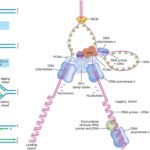IGCSE Biology 38 Views 1 Answers
Sourav PanLv 9November 15, 2024
Explain, in terms of energy loss, why food chains usually have fewer than five trophic levels
Explain, in terms of energy loss, why food chains usually have fewer than five trophic levels
Please login to save the post
Please login to submit an answer.
Sourav PanLv 9May 15, 2025
The transfer of energy from one trophic level to another in food chains is often inefficient, which explains why food chains typically have fewer than five trophic levels. Several key factors contribute to this inefficiency:
1. Energy Loss as Heat
- Metabolic Processes: A significant portion of the energy consumed by organisms is used for metabolic processes, such as respiration, movement, and growth. During these processes, energy is converted into heat and released into the environment. For instance, when a primary consumer (like a rabbit) eats a plant, much of the energy it consumes is lost as heat during respiration, meaning only a fraction of that energy is available for the next trophic level (secondary consumers).
2. Inefficient Energy Transfer
- 10% Rule: On average, only about 10% of the energy at one trophic level is transferred to the next level. This principle, known as the “10% rule,” indicates that as energy moves up through trophic levels, approximately 90% is lost at each step due to metabolic heat and other inefficiencies. For example, if producers capture 10,000 kcal of energy from sunlight, only about 1,000 kcal may be available to primary consumers (herbivores), and further decreases occur at each subsequent level.
3. Waste Production
- Excretion and Undigested Material: Not all energy consumed by an organism is converted into biomass; some energy is lost through waste products such as feces and urine. Additionally, parts of the food that are indigestible (like bones or tough plant fibers) are not utilized by the consumer, further reducing the amount of energy available for transfer to higher trophic levels.
4. Mortality Without Consumption
- Decomposing Matter: Organisms may die without being consumed by predators, leading to additional energy loss from the food chain. The dead organic matter may eventually be broken down by decomposers, but this process also results in energy being lost as heat.
5. Limited Energy Availability
- Sustainability of Higher Trophic Levels: Due to the cumulative losses of energy at each trophic level, there is often insufficient energy remaining to support additional levels beyond four or five in a typical food chain. After four to six transfers of energy, there may not be enough left to sustain viable populations at higher trophic levels (like tertiary or quaternary consumers). This limitation explains why ecosystems generally do not support more than five trophic levels.
0
0 likes
- Share on Facebook
- Share on Twitter
- Share on LinkedIn
0 found this helpful out of 0 votes
Helpful: 0%
Helpful: 0%
Was this page helpful?




